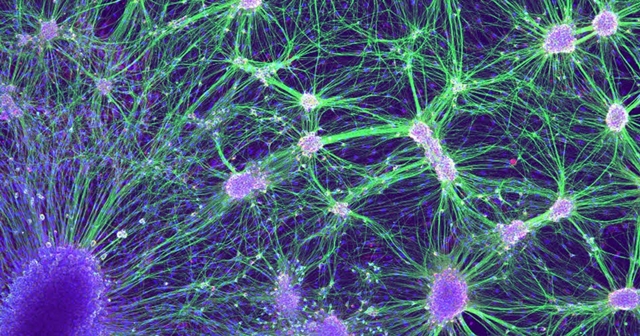12 Oct. 2020. Developers of a system to help people with spinal cord injuries regain use of their hands and wrists, are configuring the device for home use. Two new grants totaling $800,000 are funding R&D work by Ohio State University medical school and Battelle Memorial Institute, both in Columbus, Ohio.
The NeuroLife system is a creation of researchers at Battelle and Ohio State for helping people with spinal cord injuries regain conscious control of their wrists, hands, and fingers. The system bypasses damaged areas of the individual’s nervous system and communicates directly with muscles in wrist and hand. A tiny chip called the Utah Array, made by Blackrock Microsystems is implanted in an individual’s motor cortex, the part of the brain controlling voluntary movements. The Utah Array is designed to record neural activity in the brain, directed toward nerve cells in peripheral tissue, including muscles in the arm.
The NeuroLife system captures signals from the Utah Array chip, then with machine-learning algorithms decodes and transmits the decoded signals in the form of commands to an assistive sleeve worn on the forearm. Science & Enterprise in September 2018 reported on a case study of the NeuroLife system that appeared in the journal Nature Medicine. Earlier clinical trial tests of the device appeared in the journal Nature in April 2016.
The two new awards totaling $800,000 aim to make the NeuroLife system more portable and interact more readily with common mobile and home technologies often called the Internet of Things or IoT. A grant from the Craig H. Neilsen Foundation in Encino, California supports R&D work to miniaturize the NeuroLife simulation hub and and algorithms to operate more readily in home environments and with mobile technologies. The Neilsen Foundation supports research on spinal cord injuries.
A separate grant from Ohio Third Frontier funds development of a common neural interface between the NeuroLife system and the growing number of assistive devices found in the home, such as hand grips sip-and-puff controls, and IoT devices connected to smartphones and tablets. Ohio Third Frontier provides business expertise and funding for start-up businesses in Ohio spun-off from university research, but also supports new technologies with commercial potential at the state’s institutions.
“The goal is to create real, consumer-grade devices, not just lab demos, so that individuals living with spinal cord injuries can benefit and live a better quality of life,” says Ohio State physical medicine and rehabilitation professor Marcia Bockbrader in a statement. Bockbrader, the principle investigator on both projects adds, “We’ll pursue research that translates our advances to daily use so that we can create the biggest impact for people.”
More from Science & Enterprise:
- Stimulation Device Shown to Reduce Tinnitus Symptoms
- Group Advancing Electronic Spinal Cord Injury Therapies
- Wearable Device Shown to Relieve Migraine Pain
- Brain Signal Synchronization Device in Development
- High-Capacity Brain Signal Reader Demonstrated
* * *


 RSS - Posts
RSS - Posts
You must be logged in to post a comment.